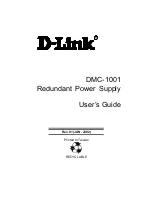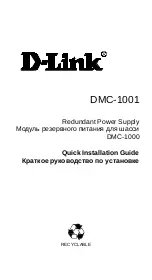
English
16
Survey of signals of red and green charger LED pilot lamps (10):
Each charger shaft is connected separately with one pair of LED pilot
lamps (10).
green LED
red LED
meaning of signal combination
is off
is on
battery pack waits for recharging
flashes
is off
battery pack is under charge
is on
is off
battery pack has already been charged
flashes
flashes
the battery is too hot/cold
is off
flashes
battery pack is damaged
Important notes for charging:
1. The longest service life and the best capacity can be reached if the
battery packs are charged at the ambient temperature ranging
from 18 °C to 24 °C.
DO NOT RECHARGE
the battery packs at the
temperature below 4.5 °C or over 40.5 °C. This is very important. You
can thus prevent serious battery pack damage.
2. Recharge the battery packs in time, before they are discharged
ful¬ly. If you establish that your accumulator-operated device
loses its power, stop it and recharge the battery pack in a suitable
charger, otherwise the battery packs can be damaged permanently
(irre¬versibly).
3. The charger is designed to fast charging / recharging of the battery
pack with the internal temperature ranging from 0 °C to 45 °C. If
the battery pack just inserted is too cold or too hot, the charger will
not recharge it and only the green and the red LED in¬dicators will
flash. After the battery pack temperature fits the standard tempera-
ture range, the fast recharging procedure will be started automati-
cally.
4. If the battery packs cannot be charged duly (the red pilot lamp is on
intermittently):
• Check battery pack contact areas for possible pollution. Clean them
by a cotton swab and spirit, if necessary.
• If the battery packs still cannot be charged correctly, send or hand
over the charger (incl. the battery packs) to the nearest authorized
service centre.
5. Under certain conditions, with the charger plugged into the power
source, the exposed charging contacts inside the charger can be
short-circuited by a foreign material. Foreign materials of a conduc
-
tive na¬ture, such as steel wool, aluminum foil or deposited metallic
particles should be kept away from charger cavities. Disconnect the
charger from the power supply source before attempting to clean.
6. If more charging operations are performed consecutively, the
charger can become warm. It is normal and does not indicate any
technical defect.
7. Prevent leak of liquid into the charger to avoid electrical accident. If
you want to facilitate battery pack cooling after its use, do not place
it in a warm(ed) environment.
8. The battery packs can remain placed in the switched-on charger
without any damage to themselves or to the charger. The battery
packs remain in the fully charged state in the charger.
DO NOT LET
the charged battery packs in the charger disconnected from the
power supply source.
9.
DO NOT USE THE BATTERY PACK
if it is damaged and liquid leaks
from the battery pack cells. If your skin is stained by the leaked
material, wash the affected part immediately and observe possible
skin reaction. Seek medical assistance, if necessary.
10. If you charge the not yet fully discharged battery pack or if you
terminate battery pack charging before the fully charged state is
reached, each such cycle has to be considered one complete cycle
of charging.
Notes for lithium (Li-Ion) accumulators
• This battery pack type does not suffer form the memory effect, it
means that the accumulators can be charged in any state of charg-
ing. If you remove the battery pack from the battery compartment
before the battery is fully charged, it will not cause any damage to
the battery.
• The Li-Ion accumulator is equipped by protection from deep dis
-
charge. If the voltage drops below the preset limit (by overload or
discharge), the electronic system disconnects the accumulators.
The device then works intermittently or does not work at all. It is
necessary to reduce machine load or to recharge the accumulator.
Accumulator storage
Store the accumulators in the fully charged state in a dry and dustfree
room at the ambient temperature ranging preferably from 5 °C to 40 °C.
If you do not use the accumulators for a longer time period, it is rec
-
ommended to charge the accumulators fully once in three months as
a minimum!
Warning!!
The charger is not user serviceable. There are no user serviceable parts
inside the charger. Servicing at the closest Authorized Service Center is
required to avoid damage to static sensitive internal components.
Always use correct battery pack (pack supplied with the tool or the
replacement pack recommended by the manufacturer, the company
Narex s.r.o.) Never install another battery pack type. It will ruin your tool
and may create a hazardous condition.
Putting into operation
Insert the charged battery pack (1) into the cordless drill screwdriver
battery pack compartment as far as the stop. (Click of the engaged
clamps can be heard (2)). When taking the battery pack (1) out of the
cordless drill screwdriver, press the clamps (2) on both sides of the bat-
tery pack and then take the battery pack out of the cordless drill screw-
driver battery pack compartment.
Switching-on
By depressing the operating push button switch (3) and by its holding
you can control speed smoothly. When depressing the push button
switch (3) the LED indicator, serving for lighting the workplace in front
of the tool lamped in the chuck, will go on automatically.
Switching-off
By releasing the push button switch (3). Runout of the spindle (chuck) is
reduced by the activated brake.
Lower speed is suitable for guiding the bolt/screw into the material.
High¬er speed is suitable for screwing the bolt/screw into the material
or for drilling into the material.
Attention!
Long-time use of variable rotating speed is not recommended as its can
result in operating push button damage.
Changed direction of rotation
Direction of rotation is changed by the change over switch of the sense
of rotation (4):
· By pushing from the right to the left – right run.
· By pushing from the left to the right – left run.
· Push button in the interposition – protection from unintentional
switching.
Attention!
If you wish to change position of the change over switch, check at first
that the operating push button is released.
Note:
During first use of the device and during the first change of the sense
of rotation a loud click can be heard. It is a normal phenomenon which
cannot be considered any problem.
Torque setting
The necessary torque can be set by swiveling the adjusting ring (5) to-
wards the relevant symbol.
Screwing
Symbol
1
= min. torque
Symbol
5
= max. torque for screwing
Drilling
Symbol
= max. torque
Tool clamping and releasing
By swiveling the clamping chuck sleeve (6), you open and close the
clamping jaws, which the working tool (drill, bit holder, etc.) is inserted
into. The devices are equipped by automatic spindle arrest (locking),
facilitating tool replacement, by using one hand only in the requested
direction.
Summary of Contents for ASV 7-A
Page 2: ...2...
Page 5: ...5 7 5 6 3 1 2 1 2 8 4 9 10...
Page 22: ...22 1 2 a RCD RCD 3 a 4 a 5 6 6...
Page 34: ...34...
Page 35: ...35...
















































